|
“Christmas is coming, the goose is getting fat….” So goes an old English Christmas Carol and it is true that Christmas is coming and will be rapidly upon us. It will probably not surprise you that I ask for gardening books, tools, or gift certificates to garden centers. Gardening items will always be used and I do not have to worry about the size or color! As far as gardening books go – one of my favorite is Tough -As -Nails Flowers for the South by Norman Winter. Winter is the retired head of the Coastal Georgia Botanic Garden and writes gardening columns for local newspapers as well has a Facebook page titled “Garden Guy.” I like this book because he give the regional origin of each plant and I feel that is important to know. He also talks about care and maintenance as well as the different cultivars available. The book covers annuals, perennials, bulbs, ornamental grasses, and vines. As far as tools, I feel that it is better to have a few really high quality tools rather than a bunch from the Dollar Store. Well made tools will last a lifetime and pruners and loppers can be re-sharpened. My very favorite tool is my Felco pruners (called secateurs in other parts of the world). They are made in Switzerland and although pricey, they are well worth it. Felco makes many sizes from small “nippers” to large pruners. I have three and I am very careful with them. Fortunately, the handles are always bright red which helps to find them in the garden if you lay them down. Another favorite tool is my Joyce Chen scissors. Joyce Chen was a Boston area restaurateur. She developed these scissors to cut up Lobster for Lobster Cantonese. Little did she suspect that gardeners would love these scissors for trimming and cutting flowers. I use them all of the time for deadheading and flower arranging. They are expensive for scissors, but I have never had mine sharpened and they have lasted for almost 20 years and are still going strong. Every gardener needs gloves and should use them every time they garden. I buy gloves by the dozen and any of the Nitrile gloves are great. They have good flexibility and can be put in the washing machine and even dried. There are many online sources for these gloves and the price goes down the more you buy. Buy a dozen and share them with a gardening friend. I usually ask for a gift certificate from an online nursery since I tend to order more exotic things not found locally. They all have online gift cards and my particular favorites are Bluestone Perennials, Digging Dog Nursery, Annie’s Annuals and Perennials, Whiteflower Farm, and High Country Gardens.
Make it a gardening Christmas with gifts that you can use to play in the dirt all year long. And don’t forget to save those Amaryllis to plant outside in your garden! Paperwhites as well. They are a gift that keeps on giving.
0 Comments
I recently gave a mini workshop for new Butterfly Garden volunteers and invited newcomers to Lowcountry gardening. I kept it short and simple and talked about four things: 1. Plants that attract pollinators 2. Our soil 3. Deer 4. Weeds It went well so I decided to repeat it as a blog. First of all – what plants attract pollinators? Well, believe it or not, anything that blooms is a big hit. A study was recently done at Great Dixter, an amazing garden in Kent, England. Insect life was measured in a native wildflower meadow and then again in the Great Border – a mixed herbaceous border of plants and shrubs, but not containing many natives if any. There were more varieties of insects in the Great Border. The key is not just to plant natives, but to encourage biodiversity by planting a variety of flowering plants – natives as well as exotics. Pollinators tend to like flowers with open daisy like blossoms as you find with Coneflowers or Sunflowers. A notable exception is Cuphea (it has many commons names such as Mexican Firecracker or Mexican cigarette plant) It has candy corn colored tubular flowers and bees and hummingbirds love it. 2. Soil – Our soil tends to be sand on top of heavy clay. It is no wonder that South Carolina had and has a flourishing clay mining industry. Our soil also has quite a bit of Phosphorus in it. If you are going to fertilize, look for a fertilizer with no or little Phosphorus. It is better to enrich or supplement your soil with a good organic compost. I use Mushroom compost available at any big box store. It is inexpensive and tends to be more alkaline which is good because our soil is acidic. Milorganite is a good all purpose fertilizer and best of all, it does not burn if you put on too much. 3. Deer – They are a real problem down here and it seems like every year they add different plants as their most favored buffet item. I have an electric fence because I grow English roses and could not do so without an effective deer barrier. You can do other things to deter deer. The idea is to make your yard inaccessible and not pleasant. Sprays do work, but you have to keep after it and start early in the season when things first begin to sprout. I like “Deer Stopper,” but some people have success with “Scram” or “Bobbex.” Physical barriers like thick hedges or even fishing line strung about a foot off the ground can work. Deer do not like to have their legs tangled. 4. Weeds - Lucky us. We have two distinct seasons of weeds down here—warm weather weeds and cold weather weeds. Spurges tend to grow through both seasons. You have seen Prostrate Spurge creeping in cracks of pavement. Fortunately, they are super easy to pull out. The worst warm weather weed is Chamber Bitter. It starts out as an innocuous looking little tree, but it can grow to six feet. Under the leaves are hundreds of seeds just waiting to explode. Chamber Bitter is everywhere and this past summer saw a bumper crop. In the winter, we have Hairy Bittercress. It loves to ride along in nursery pots when you buy a plant. I always remove at least the top inch of soil in a new purchase to avoid weed seeds. It has tiny little flowers and actually looks quite cute. Warning – it can spread like crazy. At the risk of sounding deranged, sometimes pulling weeds can be therapeutic. Unless you have a commercial composter picking up your yard waste, do not compost weeds or diseased plant material. Spent plant materials or weeds need to be heated to a certain temperature in order to kill weed seeds or pathogens. So that is Gardening for Pollinators 101. I do have to say that my garden has never looked this good at the end of October. It must have been those three solid weeks of rain that we had that did the trick.
This past summer was one for the books: heat, humidity, tiger mosquitos, too many Armadillos, and then three solid weeks of rain. Usually my garden is dried out and dead looking about now, but I have things blooming that typically bloom in May. My Tithonia (Mexican Sunflower) is so late this year. I planted the seeds at the normal time in the early spring, but they took forever to get going. Well, so did the pollinators this year. I had a whole summer without butterflies (other than our local Gulf Fritillaries), and now everyone is joining the party. With all of the rain in August and early September, mold was a definite problem in the garden. I had white mold on my Salvia stems. I have never found fungicides to be particularly effective so I just cut back the infected stems. I have learned that the most important thing that you can do to prevent mold and other fungal diseases is to keep a good airflow. My garden will never be overflowing like the gardens in England, but at least I am not battling pests and disease. Judicious pruning and trimming is so much better than use of chemicals. If you have container plants suffering from fungus, the best thing to use is cinnamon. Now I would not buy the most expensive brand, but go to the Mexican spice section of the supermarket and get that or go to a Mexican market. Much cheaper. Sprinkle it on the top of the soil. Another home remedy that is becoming popular is garlic spray. This will deter aphids, thrips, other pests, and downy mildew. You can buy it commercially or make your own by putting 4 garlic cloves in a tablespoon of mineral oil. Let this mixture sit for a day. Discard the cloves and add the oil to a pint spray bottle with 1 teaspoon of dish detergent. Shake and spray infected areas of the plant. So much better than those dangerous chemicals. It is heartening to see that many of them have been taken off the shelves and replaced with safer alternatives. Speaking of chemicals, let’s talk about Glysophate. This is very controversial and you will no doubt notice scary posts about Glysophate, usually written by law firms hoping to attract clients. There is no scientific evidence that Glysophate is carcinogenic to humans. Most major organizations like the EEU, EPA, and WHO have declared Glysophate to be safe. The major issue is that it can be carried in water and that it does affect aquatic life. By the way, the State of California has ruled that Glysophate is carcinogenic, but they also have ruled that Starbucks coffee is carcinogenic, my golf grips are carcinogenic, and just about everything else. There are Proposition 65 warning labels on just about everything. It certainly does not make you feel very safe about just living. I should get this posted in case we lose power. Have you ever seen so many pinecones this year in the trees? I suspect that many of them will be in my yard after the storm passes. I will dutifully pick them all up because otherwise I will see a forest of baby pine trees in my garden next spring.
Stay safe and happy clean up. It does burn calories. Enough is Enough!Okay, this is not fun or funny anymore. Stop the rain already. I have lived here ten years and I can never remember so much rain every single day without a break. Send it to Massachusetts where they are having the worst drought in recent history. So, what can we do in the Lowcountry with all this water? Well, the first thing seems simple, but people apparently do not “get it.” Turn off your irrigation. It should be a simple on or auto switch. You are all smart folks, surely you can figure it out. Nothing makes me sadder than to see irrigation running full tilt while it is pouring rain. Water is too expensive down here to waste. Turf grass in your lawn needs one inch per week in the summer. We have gotten much more than that during these past weeks of rain. Another thing to do is check the drainage in your containers. The holes in the bottom should be free draining and not clogged. Use a screwdriver or pencil to open up any drainage holes. If you have placed a plastic pot inside a container without holes, you had better be emptying out the standing water or your plant will drown.
When I pot plants up, I use either perlite or vermiculite mixed in my potting mixture to aid in draining. Perlite is a type of volcanic glass that has a high water content and can help to retain water when mixed in potting soil. Ironically, it also keeps soil porous and aides in drainage. Vermiculite is a mineral that also retains water, but again it helps to aerate the soil and keep it open to drain freely. You may start to see mold on plant stems. My Salvia have white mold all long the stems and on the leaves. What to do? I simply cut the damaged plant material off even if it means cutting the plant to the ground. Chances are, it will come back later. There are chemical fungicides, but I have never had much luck with them. I avoid spraying anything in my garden if I can. If your house plants have any mold, try sprinkling Cinnamon around the plant on top of the soil. Cinnamon is a natural fungicide. Now I would not use my Penzeys spice for this, but go to the Mexican spice section in your grocery store and you can get a giant container of Cinnamon for a little money. A few years ago, Basil was susceptible to downy mildew and Cinnamon came to the rescue for many of us. I wish I could change the weather, my yard is beginning to look very much like a tropical jungle. We will just have to wait it out and hope that the current pattern changes and is not replaced by something worse. Where have the butterflies been this summer? I have been hearing that from everyone and witnessing their absence myself. No one seems to know. It could be a different migration pattern or those crazy thunderstorms in June. Was it the late hard freeze in March that fouled up their trip to our gardens? If the experts don’t know, I doubt if we will. Take heart though. I just went to our Island’s Butterfly Garden to weed (Chamber Bitter of course) and found what was left of a giant Bronze Fennel plant (Foeniculum vulgare) covered by caterpillars. I found that they are Swallowtail caterpillars by pokng one gently. Little orange horns popped out (Be Afraid, Be Very Afraid) and he/she emitted a musty smell. Yes, it was a swallowtail caterpillar – no doubt. They love Fennel as well as Parsley. Fennel is a very cool plant to put in your garden. It has feathery asparagus like leaves, sturdy stalks, and yellow umbrel flowers. The seeds are used quite a bit in Italian and Indian cooking. Parsley is another under rated garden plant. No flowers to speak of, but I love the dark green foliage of curly parsley. The City of Greenville, SC has curly Parsley along its sidewalks all Winter as an edging. Grow it from seed or look for it in the herb section of nurseries when weather cools down. I have mentioned Tithonia or Mexican Sunflower before. It is a great annual that can be grown from seed. You could still start some and have it bloom for pollinators before our cool down. Mine got a very slow start this year due to the amount of rain we had in the late Spring. Hummingbirds are also pollinators and they love some sugar water in a feeder as well as your garden flowers. Remember- it is simple to make sugar water. One-half cup of sugar to two cups of water. Why buy it? My Hummingbirds will sip and sip and then fly in front of the window as if to thank me.
Things may look at little beat up in the heat of our late summer gardens, but there is still lots of see and enjoy. I'm Melting, Melting....Lately when I am in the garden, those immortal words said by the Wicked Witch of the West come to mind, but not because someone has thrown water on me. Quite the contrary, I wish someone would throw a bucket of water on me. The heat and humidity definitely get to me these summer days. Pity poor Europe and Britain where they do not have the luxury of our air conditioning to escape into. Here are a few things to watch for in your gardens during this steamy time of the year – Irrigation – For heavens sake, if we get one of those afternoon thunderstorms, turn off your irrigation. More plants are killed from too much water than too little. Rain water is much better for your plants than county water with its chemical treatment, but too much of a good thing is just too much of a good thing. Root rot and fungal diseases are very real problems right now. If you do need to irrigate, remember that early in the morning is the best time – before the sun heats up the soil. If you water at night, moisture can cause some disease issues and if you water in the heat of the day, most of the water evaporates before the plant is able to take it up from the roots. Mulch - Mulching is always helpful any time of the year. I have been using mushroom compost as a mulch. It helps enrich the soil as the nutrients leach down, it keeps weed growth down, and it helps to keep the soil cooler. Weeds - Weeds love hot and moist conditions. The worst weed you will see now is Chamberbitter. This innocuous looking little weed has hundred of seeds under its stems and can grow to six feet tall. It spreads like crazy, but fortunately can be easily pulled out when young. Dog fennel grows well here and looks like a small fluffy tree. Various spurges will try to take over your garden beds as well. Pull, pull, and pull. Do not compost these unless your yard waste goes to a professional composter where the temperature is so high that weed seeds will be killed. Sad Plants—Some of your plants may look sad right now. It is fine to cut them back. I have cut my Geraniums (Pelargoniums) way back and put them in the shade. When the weather gets cooler, they will come back. I have also cut down some Salvias that look tatty. It will not hurt plants to have a mid summer hair cut.
Fertilizer – With all the rain we have been getting, you may need to fertilize. I try not to and opt to just depend upon compost for nutrients. Container plants will definitely need a slow release fertilizer. Do not use a liquid as it will just wash away. Granular is better to use. These are just a few tips to help you get through these drippy, three t shirt, two shower days. I was fortunate enough to spend nearly two weeks in England visiting gardens and attending the Chelsea Flower Show. Chelsea is the largest flower show in the world. Gardening is a huge pastime in the U.K. No matter how small a plot people have, most have a garden and many grow their own vegetables. Their houses may be smaller than ours, but nearly everyone has a small greenhouse in the back garden. It is a very different world over there. And speaking of world, the most popular TV show is “Gardener’s World” on the BBC. Every Friday night, people are glued to their TV’s watching the host Monty Don with his two dogs working in his garden. Monty and the other presenters on the show are like rock stars to their adoring public. I must admit that my heart skipped a beat when I saw Arit Anderson standing in one of the show gardens at Chelsea presenting for the cameras. She is one of my favorite presenters. There are many beautiful gardens across the British countryside that are destinations for the public and all contain cafes and gift stores making for a real day out. There are hundreds of such gardens in the U.K. and names of favorite gardens are great topics of conversation. I was fortunate to visit the Royal Horticultural Society flagship garden – RHS Wisley. Wisley is enormous with lovely displays, but my favorite part was the brand new research facility named Hilltop. This is where scientists study plant DNA and plant pathology. I guess that we can blame them for the Latin name changes on various plants as they do their Ancestor.com work on plants. One new thing that has come out of the current research is the No Dig movement. I was always told to dig and then dig deeply again to totally loosen the soil and to turn the soil over. Now we find out that this damages the soil structure and all of the tiny beneficial mico-organisms in the soil. And the no dig method does not bring up weed seeds. Who knew? Dig only a hole to put the plant in and then mulch heavily with good organic matter. They use something called Strulch over there. Strulch is mineralized ground up straw. It did look good enough to eat. Unfortunately, it is not available here – yet. A girl can dream. From Wisley we went to Sissinghurst Castle gardens and Great Dixter. Sissinghurst was the home of Vita Sackville-West and her husband, Harold Nicolson. I will not go into their relationship as a couple, but they had an incredible vision for gardens and the white garden is world renown. I was able to meet the head gardener, Troy Scott-Smith. His posts on Instagram was well worth a follow. What a heavenly place! Great Dixter is famous as a teaching garden. Students from all over the world spend a year or two at Dixter and then become famous in their own right. The long border is spectacular and scientists have discovered that there is more biodiversity in the planted mixed border of shrubs, bulbs, annuals, and perennials, than there is in the "rewilded" meadow of native plants. My favorite garden was the smallest – Denmans in West Sussex. The former residence of garden designer, John Brookes (MBE 1933-2018), an American Horticulturalist has taken over the garden, is working to restore it, and has opened it to the public. There was such a personal quality to this garden that I find it difficult to put in words. My non-gardening husband felt it as well. You are led through a series of garden rooms with your eye drawn towards something unique and beautiful whether it be a pond, a large jar, or an iconic blue bench that Brookes used as signature pieces in his garden. The owner before Brookes was a plantswoman who experimented with gravel gardening – that is actually planting in gravel. It is very popular in the UK and Chanticleer near Philadelphia has a large gravel garden. The plants appear to thrive and the weeds do not. I may try to plant one this winter. It is too hot to be hauling gravel now. London and Chelsea were in full bloom not only for the Flower Show, but also the jubilee and floral displays were everywhere on buildings and along streets. It is a very different world to ours . Gardens are seen as not just a nice extra to have, but essential for wellbeing. Almost every hospital has a garden as do rehab centres. There are Cancer Centresa around the nation (Maggie’s Place) where patients can drop in for a cup of tea and be surrounded by a lush garden where they can work if they wish or just enjoy the beauty. I wish we could start that here. Perhaps we can.
May MusingsWould you like to feel like you have been on vacation without leaving Beaufort County? Visit Wimbee Creek Flower Farm in Seabrook. It is a morning out that will leave you with the sense that you have been at a truly magical place. A group of us met in the flower barn for instruction on making arrangements by Maria Baldwin, the owner. We toured the flower fields and then made our own special arrangements from a huge array of cut blossoms and foliage. After our artistic creations, we were treated to a lovely luncheon under a huge Live Oak tree. This is a don’t miss experience: www.wimbeecreekfarm.com May is really the time when our gardens come alive in the heat and sunshine. It would be nice if we would get a little more rain other than just threats. I have really come to love Kniphofia or Red Hot Poker. The tall spears of orange and yellow flowers really ping in my garden. If you keep on deadheading the rather unimpressive seed heads, you will see more spikes coming up. One disappointment this year is that two plants failed to come up. None of the “Wish” series of Salvias came back although a neighbor has it in her garden. Both “Wendy’s Wish” and “Enber Wish” lasted three years and that was the end. Also, I cannot seem to be able to grow Joe Pye Weed (Eutrochium maculatum “Little Joe”) I have seen in growing by the side of the roads in abundance up north, but mine did not come up in either my garden or the community garden I maintain. I have heard other gardeners say that they do not have luck with it either. I am trying a new cultivar so we will see if that works or not. It is such a great pollinator plant that I would hate not to have it. That last frost we had in March really nipped some things so that you might find things like Plumbago flowering late this year. The shrub Duranta really had its top blackened. It is just not frost hardy. It doesn’t die, but it sure looks ugly until you prune the dead stuff off. I love Coneflowers and I have them everywhere this year. They are a short lived perennial, but they reseed readily. Do not remove the seed heads at the end of the season and you should get volunteers.
I have noticed that things are coming in late at garden centers this year. Perhaps they were hit by that late freeze as well. I will be in England for the next few weeks visiting gardens in Sussex and Kent as well as attending the Chelsea Flower Show, finally! Covid threw a wrench (or spanner) into travel plans for over two years. It has been a very dry spring despite warnings of severe storms, hail, locusts, tornados, and falling toads. It just seems too early to be using irrigation and our very expensive water down here. Bring on the April showers, You have two weeks to produce! My roses are looking good and about to burst into full bloom. I order my roses from David Austin, USA. David Austin was an English rosarian who passed away two years ago after having introduced the world to some amazing roses. Best of all, they all have scent unlike the new Hybrids. He named his roses after famous figures in British history and this might confuse most Americans and many Brits. My favorite rose is Abraham Darby. Geek that I am, I know that Darby was an early 18th century Quaker industrialist who first smelted iron from coke, but I doubt that is a name on everyone’s lips. Fortunately, the extensive catalog from Austin roses describes the naming of each rose so mysteries are solved. The last hard freeze we had in the middle of March really separated the hardy from the not so hardy plants. My usually hardy Salvias took a hit. The "Black and Blue" and "Amistad" Salvias fared well. So did the “Rockin”series. The “Wish” series ("Wendy’s Wish", "Ember’s Wish") have disappeared completely. They are now off of my list. I have gotten quite brutal with my plants. If they do not come back successfully, then they are done. I will not replace them. They may work well in another garden, but not mine. I also have found the same successes and failures in the Pollinator Garden that I maintain at a different location. I love Hamelia patens or Mexican Firebush. It is very susceptible to a frost. It does die all the way down to the ground and then comes back slowly from the roots. Just cut the dead remains back. The warmer the soil, the faster it will return. There is no better plant for a spring garden than Baptisia (Baptisia australis) or wild indigo. I have the traditional one with blueish purple flowers and then I have a cultivar called “Carolina Moonlight” that is a pale yellow. The foliage is very interesting as well as the pea like seed pods when the flowers are done. 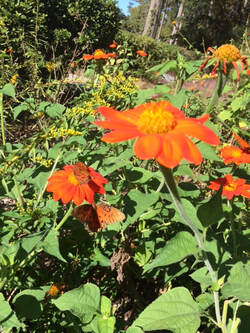 Tithonia Tithonia The soil is warm enough for you to plant seeds. I have planted Mexican Sunflowers (Tithonia rotundifolia) for my butterflies. I have Zinnias in now and will plant some more seeds in 30 days so that I get a continuous supply. I have also planted Ageratum seeds. Ageratum is pretty tough although it did die back this year, but self seeds well. This has been a pretty crazy late winter and spring where we have had temps in the 80’s for a bit and then two days later a frost. I did something different this year and mulched last fall. This made a huge difference in plant viability and weed abatement. The strong winds have also been a problem particularly for my own garden right on the marsh. I have never had so many heavy containers blow over! Winds can desiccate plants and weaken them. The winds have been so strong that some days I have had to fill my fountain twice as the water blows right out of it. With all my whining though, it is so wonderful to see things appearing above the soil as the soil temperature rises and the days grow longer. Get out there and play in the dirt. Dealing With the Ups and Downs of Our Weather It is not easy to do spring gardening when it is 82 one day and 25 the very next night. Such has been our fate this winter and spring. If you have, like me, had quite few things “nipped” by the recent freeze, fear not, Just cut off the dead stuff and the plant will re- sprout. Even some of my toughest plants were affected by this topsy turvy weather. If we were confused by going from shorts and t shirts to a sweater or jacket, think of how our shrubs and perennials felt! Cold weather doe not seem to affect bulbs though and mine made it through just fine and I had some interesting species tulips that bloomed quite early. Species tulips are as close to the original bulb found in Turkey as it can be. They are tougher than the hybridized tulips from Holland. They are smaller and more delicate looking, but unlike the hybrids, they will come back next year. You probably will have noticed that the cost of plants has gone up this year due to fuel and transportation costs. One nice way around this is to plant seeds. Wait until the night temperatures are consistently above 50 for best germination. The Orlaya grandiflora that I planted last Fall are up and blooming as well as my Sweet Peas (Latyrus odorata). They like the cold temps and fall planting is best. I experimented with Borage this year and planted it last fall with great results. Borage is sometimes considered an herb with leaves that taste like cucumber. The Brits use it in Pimm’s Cup, a summer cocktail. I love the flowers and so do the bees. My Passionflower vine wintered over along with Gulf Fritillary caterpillars and I already have butterflies as well as many chrysalis. When it warms up, I am planting Ageratum. I was not enamored with that annual because it was so over used in the last century. It was the standard bedding plant and you saw it along with annual red Salvia at the entrance to every mall and shopping center. The new improved Ageratum is much taller and really has lovely fuzzy blue flowers. There is a native Ageratum here that I rescued from death on the golf course and it is equally beautiful and reseeds very well. And of course, I am planting Tithonia or Mexican sunflower. If you have room to only plant one thing for pollinators, make it this plant. It grows quite tall and might flop over, but you will have butterflies practically fighting over it. It also makes a very nice cut flower. Don’t forget Zinnias. I know that they are considered common, but you can get many sizes and colors now. They really add a ping to your garden and again, they are a great pollinator plant. I am trying something for fun and will let you know if it works out – Money Plant (Lunaria annua) I remember this plant from my childhood. It is a biennial so it will not bloom this year, but next year I should have those coin shaped silver seed heads and hopefully it will reseed for years to come.
So, keep a weather eye on the temperatures and try a packet of seeds. For a small amount of money, you can fill your garden with flowers and many will reseed every year. |
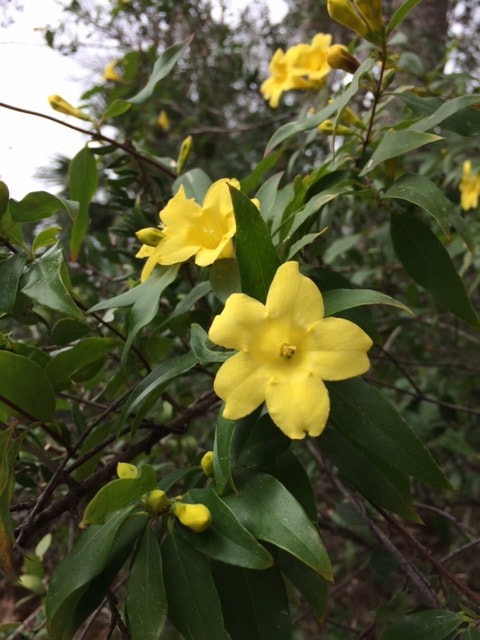
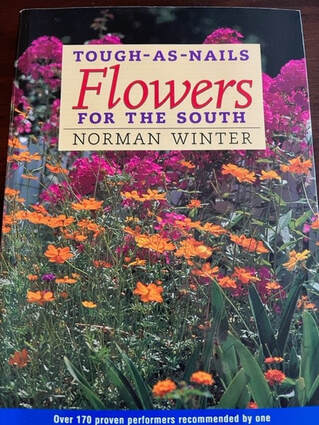

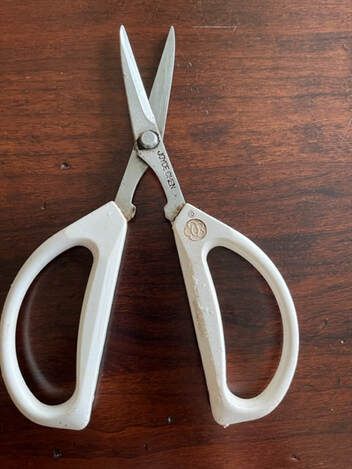
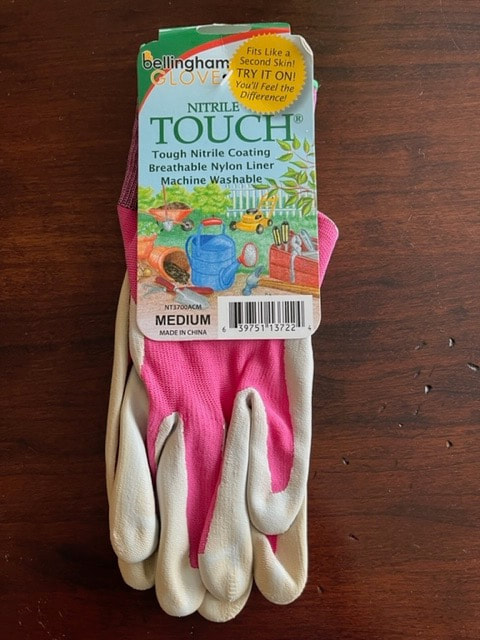
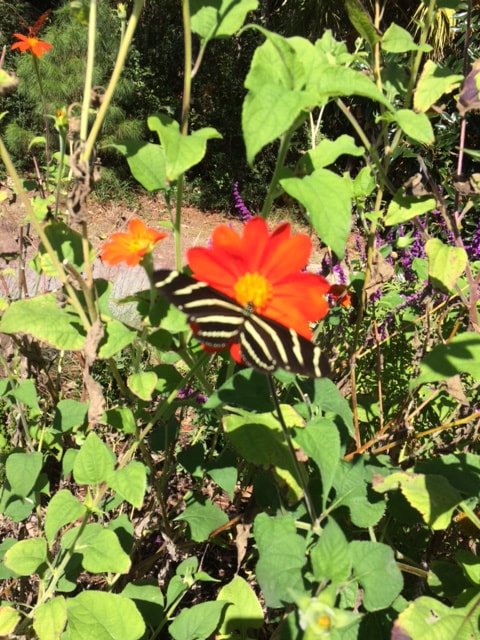
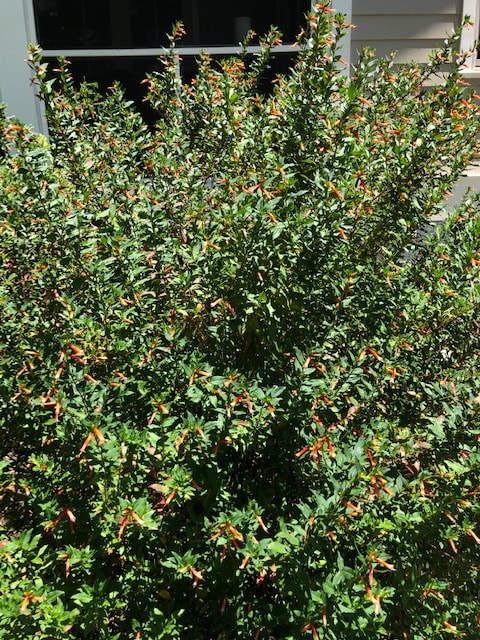
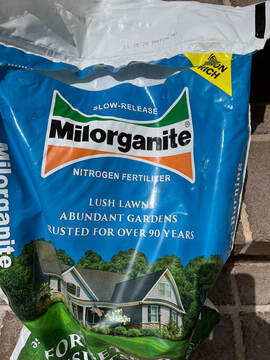
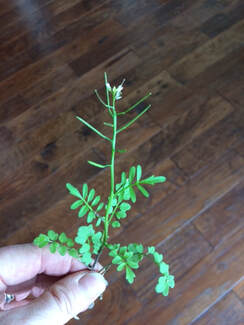
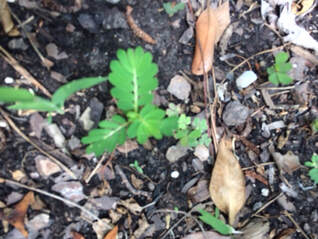
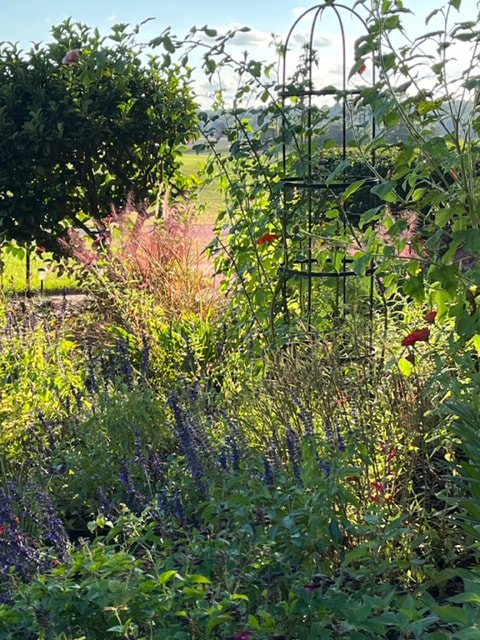

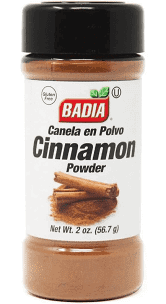

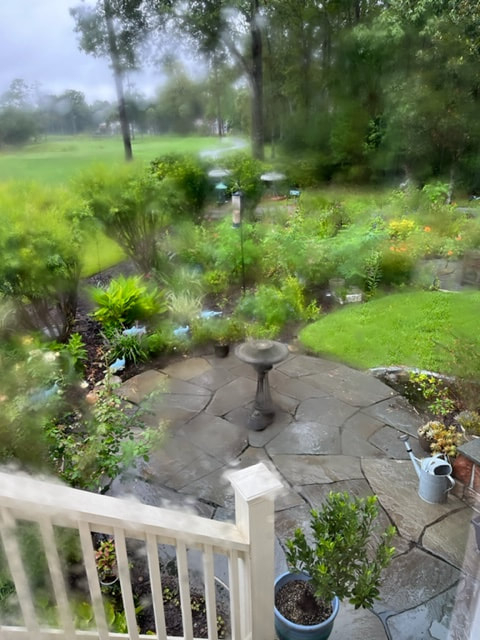
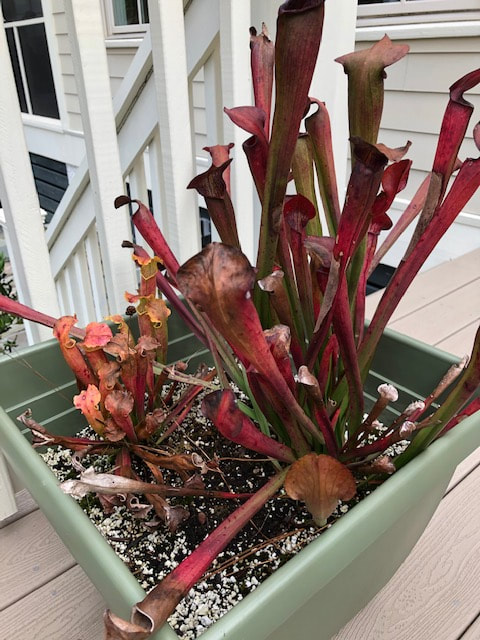
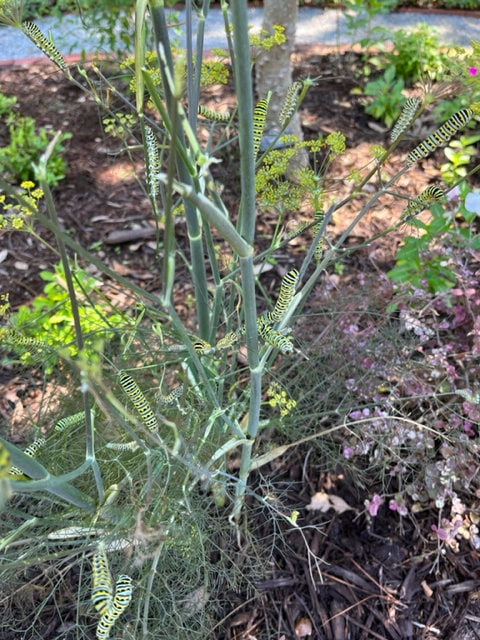
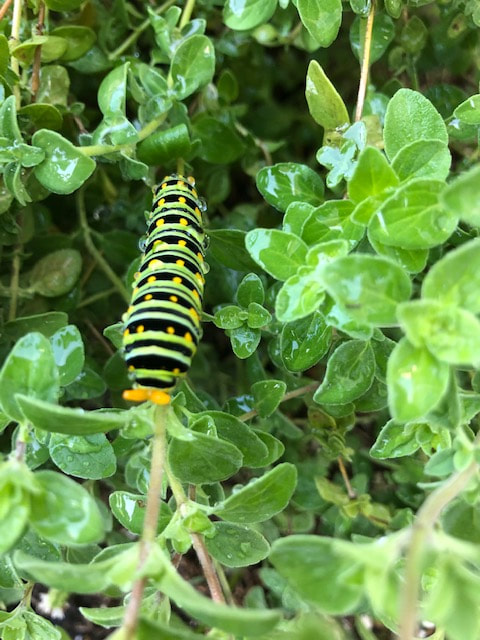
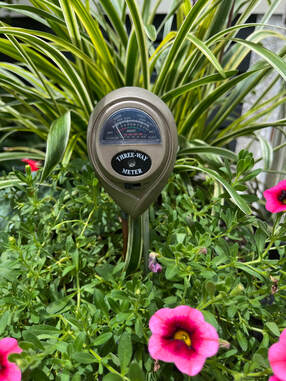
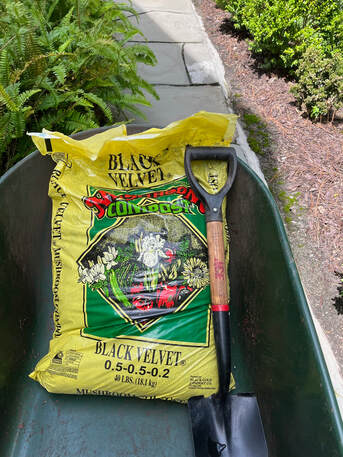
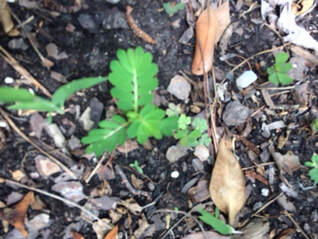

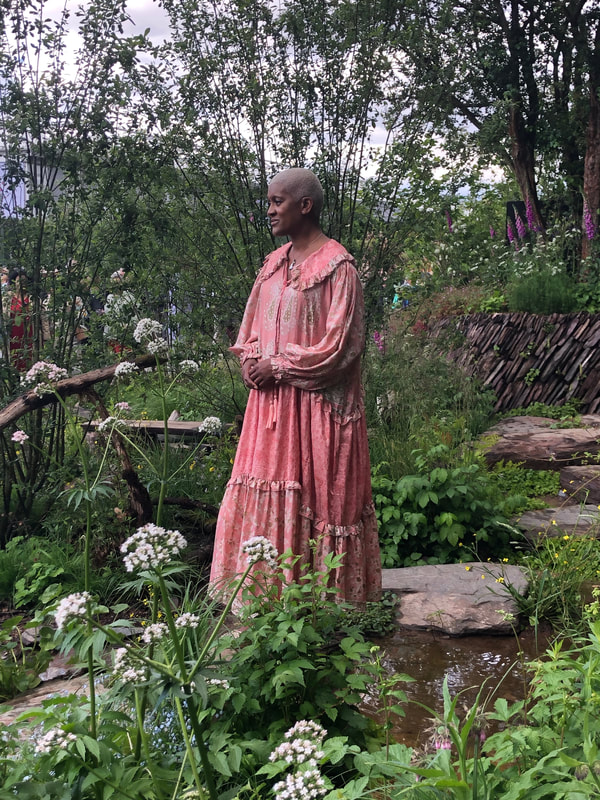
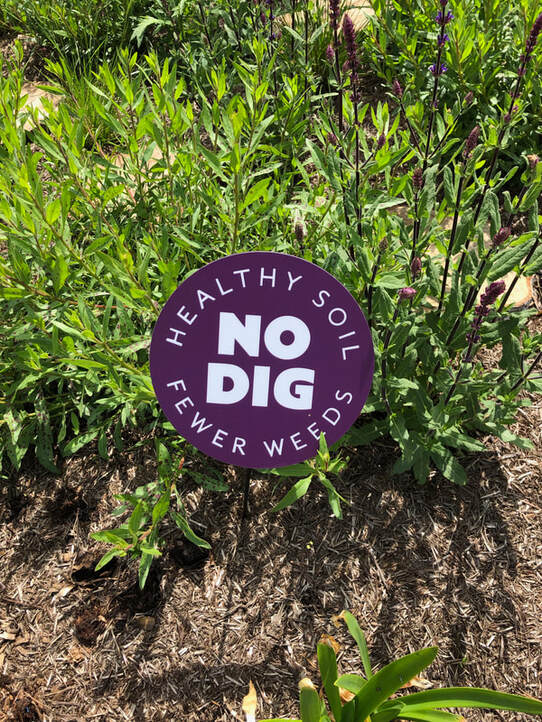
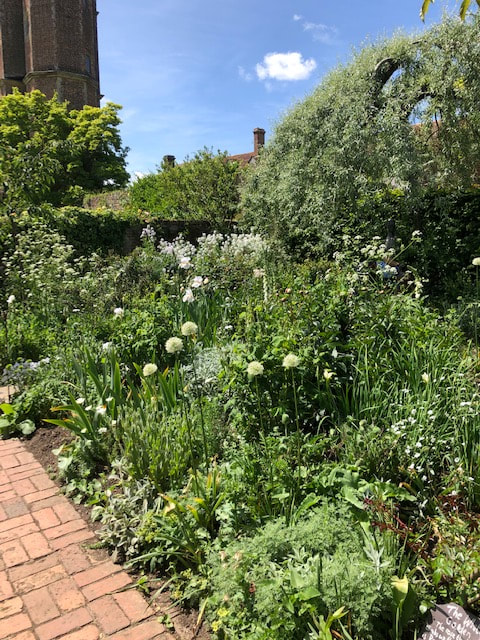
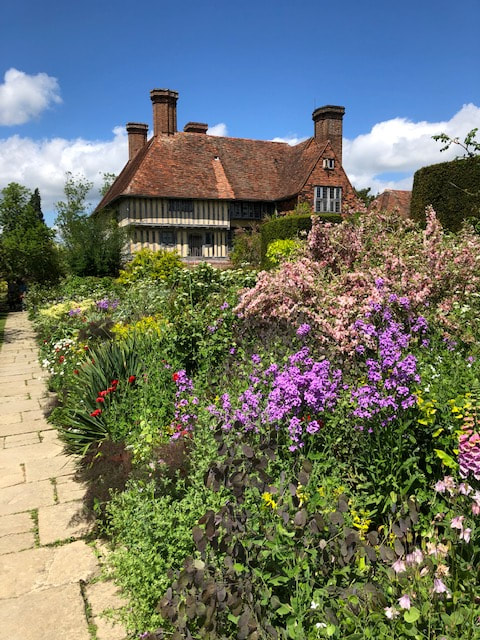
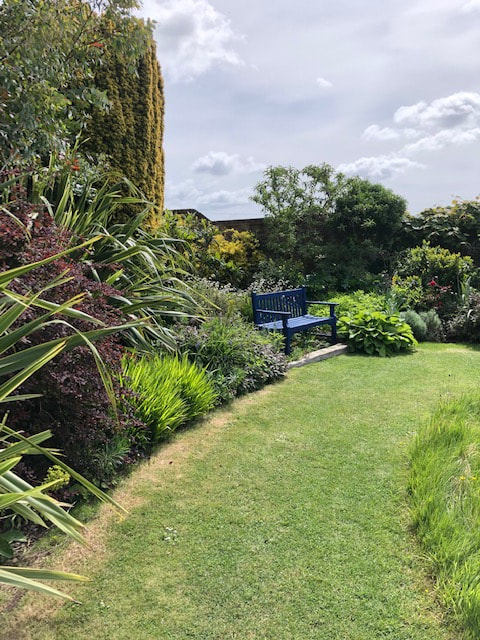

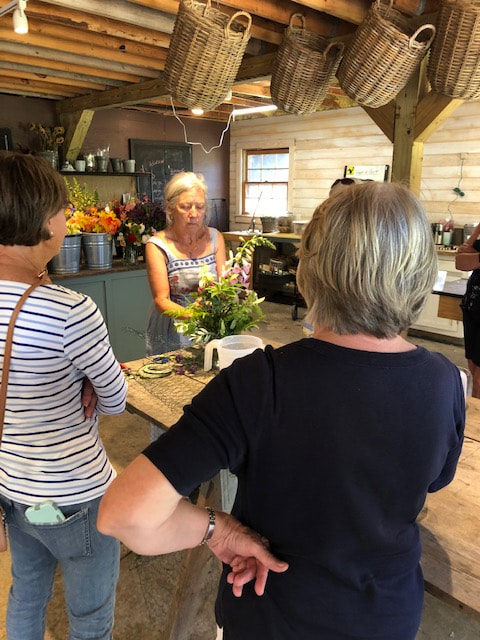
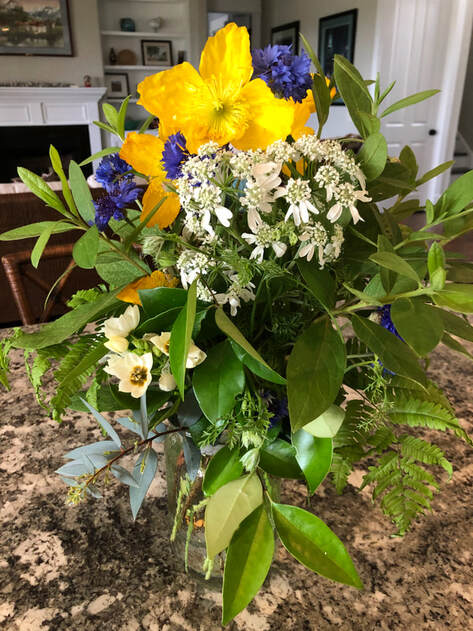
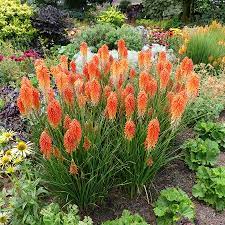
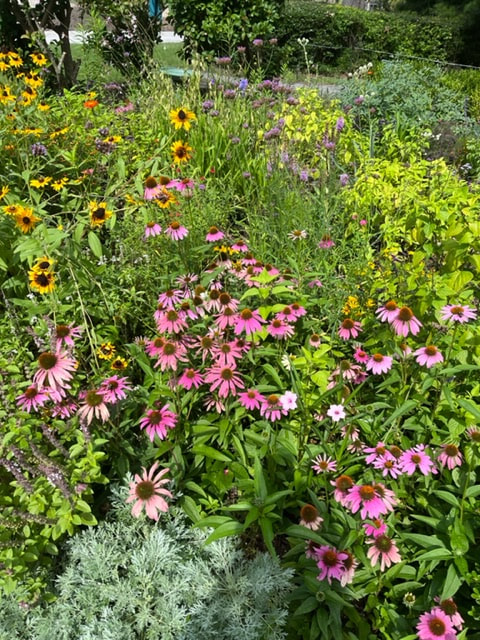
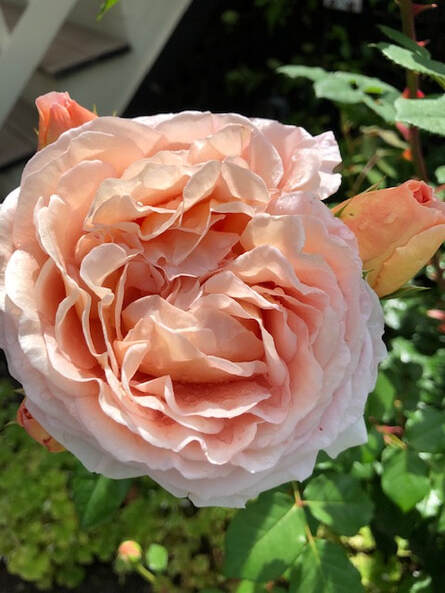
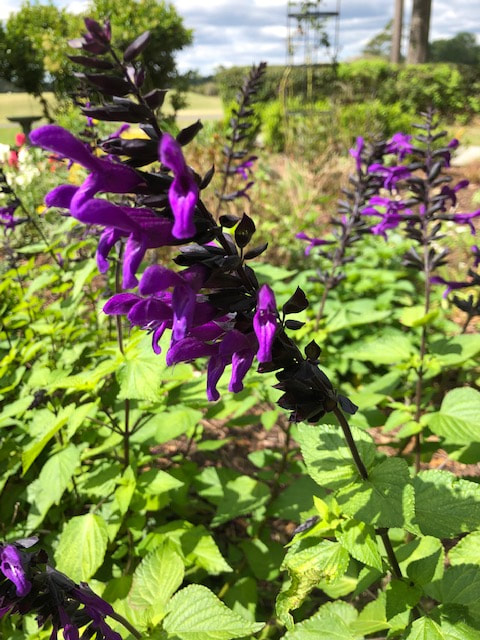
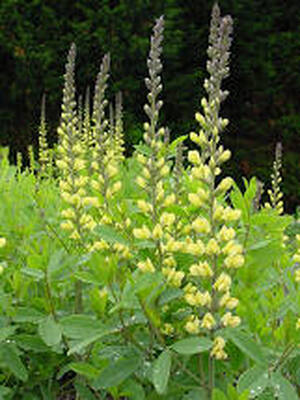
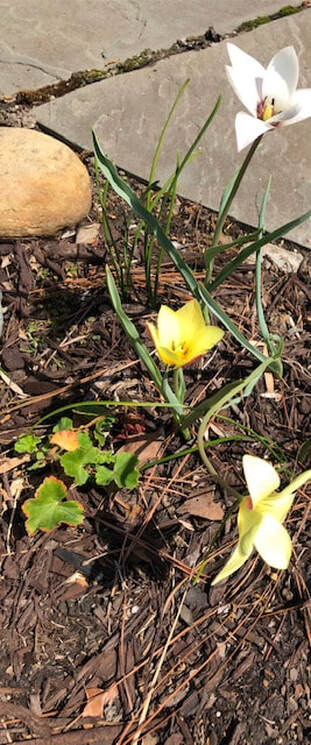
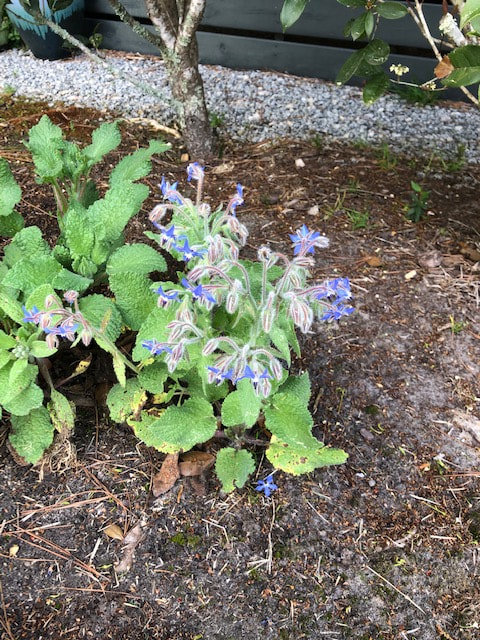
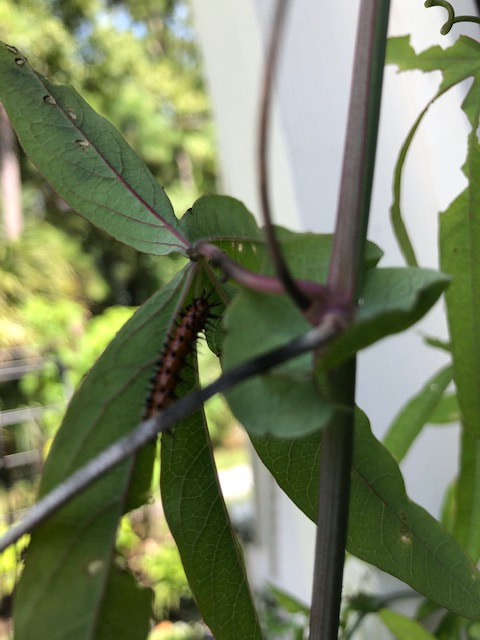
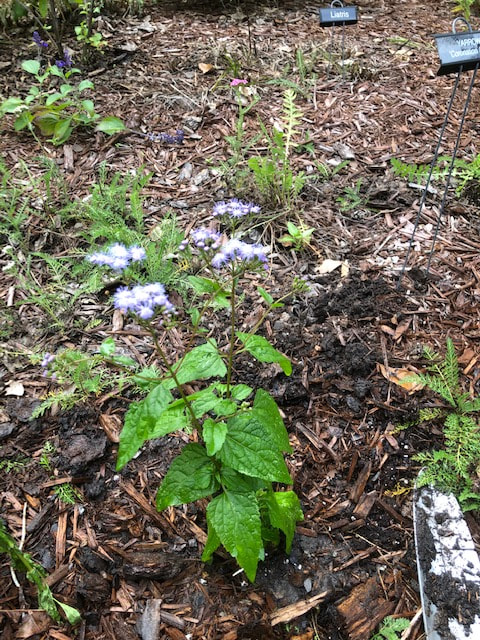
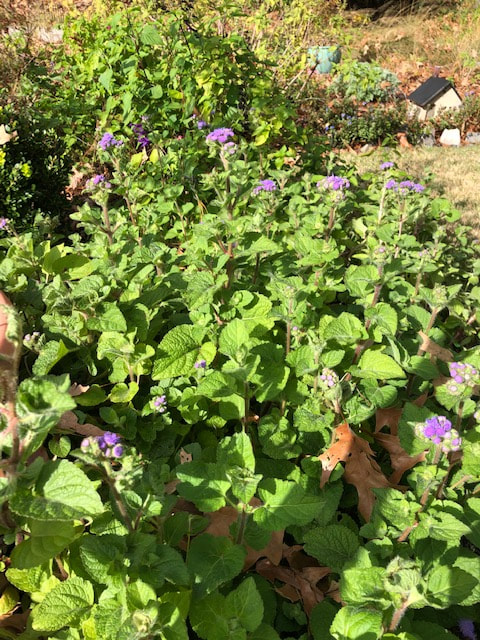
 RSS Feed
RSS Feed
